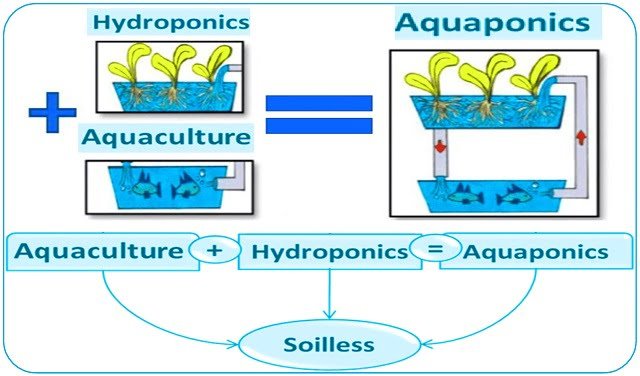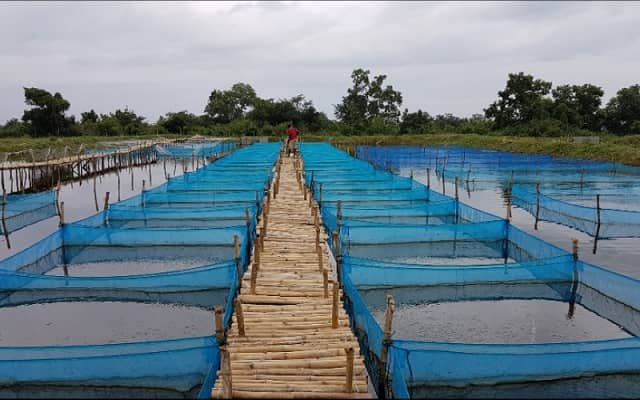
The global demand for abalone, a prized delicacy of the sea, has driven the growth of abalone aquaculture. However, this industry faces a significant challenge: waste management. Abalone farming produces nutrient-rich sludge, a mix of uneaten food and waste products, which can negatively affect water quality and the health of the abalone. Traditional cleaning methods are labor-intensive and costly.
Scientists from the University of Fort Hare (South Africa) and the Helmholtz Center for Polar and Marine Research (Germany) published a study exploring the effects of farming and co-culturing methods with sea cucumbers (Neostichopus grammatus) and the frequency of tank cleaning on the growth of abalone (Haliotis midae), water quality, and sludge characteristics.
The challenge: keeping the tanks clean
Abalone farming generates nutrient-rich sludge from uneaten food and waste. This sludge settles at the bottom of the tanks, causing several problems:
- Decreased water quality: The decomposition of the sludge harms water quality, which negatively affects the growth and health of the abalone.
- Increased risk of disease: Bacteria thrive in the sludge, increasing the risk of infections.
Frequent cleaning is essential to maintain water quality and the health of the abalone. But cleaning tanks often, especially in large-scale operations, translates into high labor costs and resource use.
The intriguing solution: co-culturing with sea cucumbers
The researchers studied the impact of different cleaning frequencies and a co-culturing system with sea cucumbers, in an Integrated Multi-Trophic Aquaculture (IMTA) approach. The abalones were raised in tanks, either alone (monoculture) or with sea cucumbers (co-culture). The cleaning frequency was also tested by cleaning the tanks once or twice a week.
The results: a win-win situation
The study revealed some fascinating findings:
- Abalone growth: Surprisingly, abalone grew better when co-cultured with sea cucumbers and the tanks were cleaned only once a week. This suggests that sea cucumbers play a role in waste management, reducing the need for frequent cleaning.
- Sea cucumber survival: While the weight of the sea cucumbers decreased in all tanks, their survival rate remained high. This indicates they adapted to the environment and can benefit from other food sources besides abalone waste.
- Reduced labor costs: By effectively managing waste through co-culturing, the cleaning frequency can be halved, significantly reducing labor and resource demands.
- Additional revenue: Sea cucumbers themselves are a valuable aquaculture product, offering a new potential source of income for abalone producers.
Conclusion
“The study demonstrated that optimizing growth in abalone farming can be achieved by cleaning the tanks twice instead of once a week. However, when abalone is co-cultured with sea cucumbers, the tanks only need to be cleaned once a week without compromising abalone growth or water quality,” the scientists concluded.
The research paves the way for a more sustainable and cost-effective approach to abalone aquaculture. By incorporating sea cucumbers, aquaculturists can potentially:
Stay Always Informed
Join our communities to instantly receive the most important news, reports, and analysis from the aquaculture industry.
- Reduce cleaning costs: Sea cucumbers act as natural waste managers, significantly reducing the need for frequent tank cleaning.
- Boost abalone growth: Co-cultured abalone thrived with once-a-week cleaning, achieving comparable growth to those in frequently cleaned tanks.
- Diversify production: Sea cucumbers themselves are a valuable aquaculture product, offering an additional income stream for farmers.
More research is needed to fully optimize this co-culturing system, but the initial findings are promising. This innovative approach could revolutionize abalone farming, making it more efficient and environmentally friendly, while boosting both production and profitability.
Open access funding was provided by the University of Fort Hare. This project is part of Aqua Vitae and was partially funded by the European Union’s Horizon 2020 Research and Innovation Programme.
Contact
Abigail John Onomu
Department of Zoology and Entomology, University of Fort Hare, Alice, 5700, South Africa
Department of Biological & Environmental Sciences, Walter Sisulu University, Private Bag, Mthatha, x1, 5117, South Africa
Email: abigailjohn90@gmail.com
Reference (open access)
Onomu, A.J., Slater, M.J. & Vine, N.G. Coculture of abalone (Haliotis midae) and sea cucumber (Neostichopus grammatus) to reduce tank cleaning frequency in abalone farming. Aquacult Int (2024). https://doi.org/10.1007/s10499-024-01508-1
Editor at the digital magazine AquaHoy. He holds a degree in Aquaculture Biology from the National University of Santa (UNS) and a Master’s degree in Science and Innovation Management from the Polytechnic University of Valencia, with postgraduate diplomas in Business Innovation and Innovation Management. He possesses extensive experience in the aquaculture and fisheries sector, having led the Fisheries Innovation Unit of the National Program for Innovation in Fisheries and Aquaculture (PNIPA). He has served as a senior consultant in technology watch, an innovation project formulator and advisor, and a lecturer at UNS. He is a member of the Peruvian College of Biologists and was recognized by the World Aquaculture Society (WAS) in 2016 for his contribution to aquaculture.




